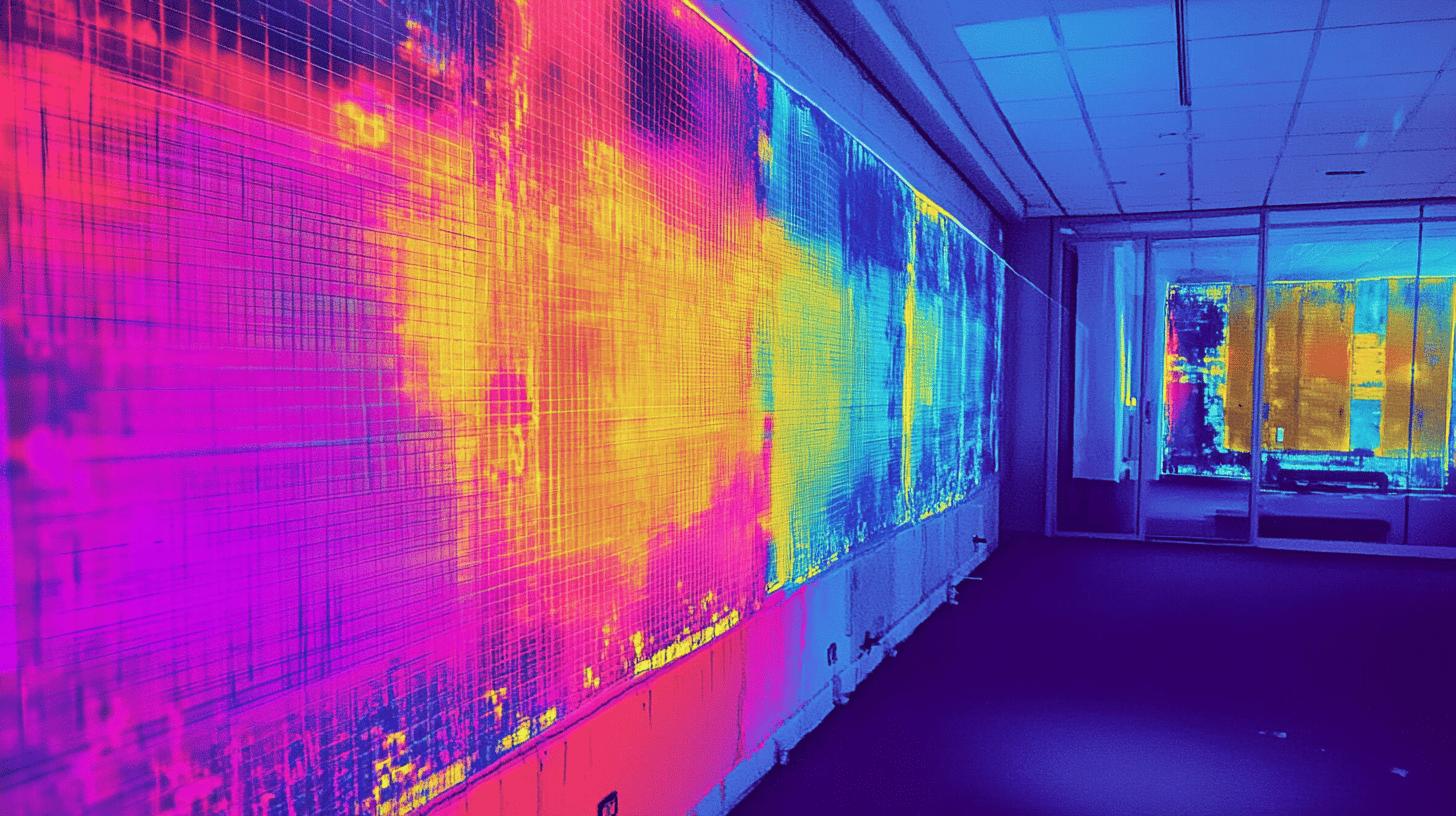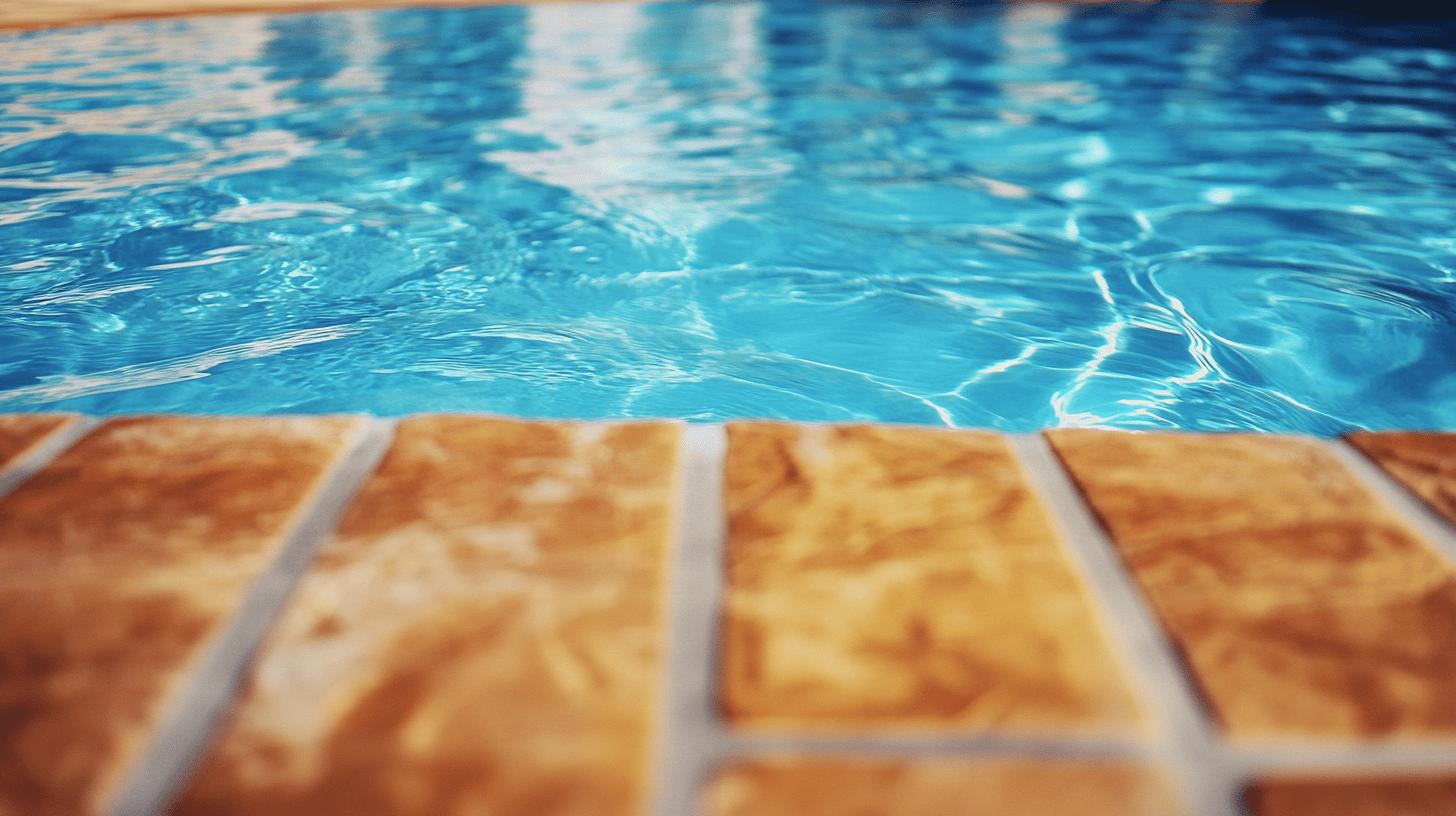TL;DR:
- Signs of Leaks: Look for moisture, stains, or mold in kitchens, bathrooms, basements, attics, and laundry rooms.
- Advanced Detection Methods:
- Thermal Imaging: Detects temperature changes.
- Acoustic Detection: Hears leaks in pressurized systems.
- Electronic Detectors: Use sound and temperature to find leaks.
- DIY vs Professional: DIY can find minor leaks; professionals use advanced tools for complex issues.
- Specific Detection Techniques:
- Gas Leaks: Use electronic detectors.
- Pool Leaks: Conduct a dye test.
- Underground Leaks: Employ Ground Penetrating Radar (GPR).
- Importance: Early detection prevents damage, saves money, conserves water, and maintains property value.
Could a tiny drip be costing you a lot of money without you realizing it? Finding a leak early can save you cash and protect your home from water damage. The great news is that you don’t have to be a plumbing expert to spot leaks. With a few simple visual checks and knowing what signs to look for, you can easily identify common leaks around the house. This article will cover smart ways to find and fix leaks before they become big problems, keeping your home safe, dry, and damage-free. Let’s jump into some effective leak detection strategies!
Visual Signs and Initial Leak Detection Methods
Visual inspections are essential for spotting leaks early. Look out for common signs like moisture, water stains, or mold, which can show up on walls, ceilings, or floors. Regularly checking these areas, especially the ones prone to leaks, helps catch problems before they lead to major damage.
- Kitchens: Look under sinks and around dishwashers.
- Bathrooms: Check around toilets, tubs, and showers.
- Basements: Notice any damp spots on walls or floors.
- Attics: Search for water stains on beams.
- Laundry Rooms: Inspect hoses and connections behind washers.
Acting quickly on these signs can prevent major damage. Spotting problems early saves you money on repairs and helps keep your home’s structure safe. Regular inspections allow you to catch issues before they get worse, reducing costly repairs and protecting against mold growth.
Advanced Leak Detection Technologies

Advanced technologies are essential for spotting hard-to-see leaks. They use smart methods to locate leaks without causing any damage to your property. These tools help ensure quick and efficient detection.
Thermal Imaging for Leak Detection
Thermal imaging is a non-invasive method for finding leaks by detecting temperature changes in walls or floors. It’s perfect for building inspections because it reveals hidden leaks without damaging anything. Infrared cameras can pick up temperature differences that suggest moisture, making this technique super useful for both homes and businesses.
Acoustic Leak Detection
Acoustic detection is great for pressurized systems because it picks up noise from leaks. It uses sensitive devices to listen for water or gas escaping from pipes. This method is accurate and works well for complex plumbing, especially in industrial settings. It can find leaks just by sound, so there’s no need to take anything apart, making it both efficient and reliable.
Electronic Leak Detection Tools
Electronic detectors find leaks by sensing sound, temperature changes, or gas presence. These handy tools include moisture meters and gas detectors, each designed to pick up specific signs of leaks. They can be used in a variety of settings, from homes to industrial sites, making sure leaks are identified thoroughly and accurately.
Professional vs DIY Leak Detection
DIY methods can help you quickly find minor leaks in your home. They’re perfect for spotting visible leaks or tackling simple fixes. However, they may not be precise enough for more complex issues. For example, DIY might work for a dripping faucet, but it won’t help with hidden leaks in walls or underground. If you don’t have the right tools, those hidden problems can get worse, leading to expensive repairs down the line.
- Food coloring: Detects toilet leaks by coloring the tank and checking for dye in the bowl.
- Flashlights: Spot moisture or leaks in dark areas.
- Plumber’s tape: Temporarily seals small pipe leaks.
- Water pressure gauges: Monitor drops that may indicate leaks.
Hiring a professional for leak detection has a lot of benefits, especially when dealing with complex or hidden problems. Experts use advanced tools and techniques to find leaks accurately and efficiently. Their know-how helps prevent small leaks from turning into big headaches, saving you both time and money. Plus, getting a plumber to fix leaks ensures the repairs are done right and keeps your plumbing system working properly.
Leak Detection for Different Systems

Different systems in your home require specific leak detection methods, each using its own set of tools and techniques. Knowing these methods helps you detect leaks quickly and accurately, reducing the risk of damage and improving safety.
Detecting Gas Leaks
Detecting gas leaks quickly is super important for safety. Gas leaks can lead to fires and health issues. Professionals use special electronic detectors to find gas, even in tiny amounts. These devices set off alarms right away, letting homeowners know there’s a problem. Thorough inspections are key to identifying all potential leak sources to keep everyone safe.
Discovering Pool Leaks
A dye test is a great way to spot leaks in your pool. Just add dye near the areas you think might be leaking and watch how it flows to find the leak. This method works for detecting leaks in pool walls or around fixtures without needing to drain the pool. Keeping up with regular maintenance, like making sure everything is sealed properly, can also help prevent leaks from happening in the first place.
Identifying Underground Leaks
Ground Penetrating Radar (GPR) is a smart way to find leaks underground. It sends radar pulses into the ground and captures reflections from what’s below the surface. GPR is particularly helpful for spotting leaks in buried water lines or sewage systems. It gives detailed images that pinpoint leaks without the need for a lot of digging, saving time and minimizing disruption to your property.
Importance of Timely Leak Detection
Catching leaks early can save you a lot of money and prevent serious damage. Fixing leaks quickly helps avoid structural issues and expensive repairs. If you ignore leaks, they can cause water damage, mold, and weaken your home’s structure. By detecting leaks early, you can take quick action, cut down on repair costs, and protect your home’s stability.
There are also environmental benefits and property value perks to staying on top of leaks. Finding and fixing leaks in time helps conserve water and keeps your property value intact. If leaks go unchecked, they waste water, which can raise your bills and put a strain on the environment. Managing leaks not only saves resources but also keeps your home valuable, ensuring everything runs smoothly. Regular maintenance and quick responses help you save money while being environmentally responsible.
Final Words
Visual inspections and advanced technology are key in spotting leaks. By checking your home for signs like moisture or mold, especially in kitchens and bathrooms, you can catch common leaks early on. Tools like thermal imaging and acoustic detection help find those hidden leaks that are harder to spot.
While DIY methods can work for small issues, it’s best to call a plumber or leak detection expert for thorough checks and repairs. Knowing how to detect leaks in different systems not only helps prevent damage but also protects your property value and conserves resources. This proactive approach gives you peace of mind and saves you money in the long run.
FAQ
How can a leak be detected in an apartment or house?
An effective way to detect a leak in an apartment or house is through visual inspections. Look for moisture, water stains, or mold in areas like kitchens and bathrooms.
How can you detect a water leak underground?
Detecting an underground water leak is often tricky without specialized equipment. Signs include yourself noticing a consistently damp area in your yard or a decrease in water pressure. Ground Penetrating Radar (GPR) is a professional tool that can aid in detection.
How do I find a water leak inside a wall?
Finding a leak inside a wall starts with spotting signs such as visible moisture, mold, or water stains on the wall’s surface. Further investigation may require professional tools like thermal imaging to effectively identify the exact location.
How can a leak be detected in water systems or between house and meter?
Detecting leaks in water systems or between your house and the meter involves checking your water meter for unusual activity when water is not in use. If your meter continues to run, it might indicate a leak.
What methods exist for leak detection?
Common methods for leak detection range from simple visual inspections for moisture or mold to advanced technologies like thermal imaging, acoustic methods for pressurized systems, and electronic detectors.
What is the easiest way to check for a fluid leak?
The easiest way to check for a fluid leak is to visually inspect for puddles or drips. For more accuracy, consider using food coloring in toilets or a flashlight to spot small leaks.
How can you check for leaks in general?
To check for leaks, regularly inspect visible plumbing, examine ceilings and walls for dampness, compare water bills for sudden increases, and listen for drips or running water when all faucets are off.

